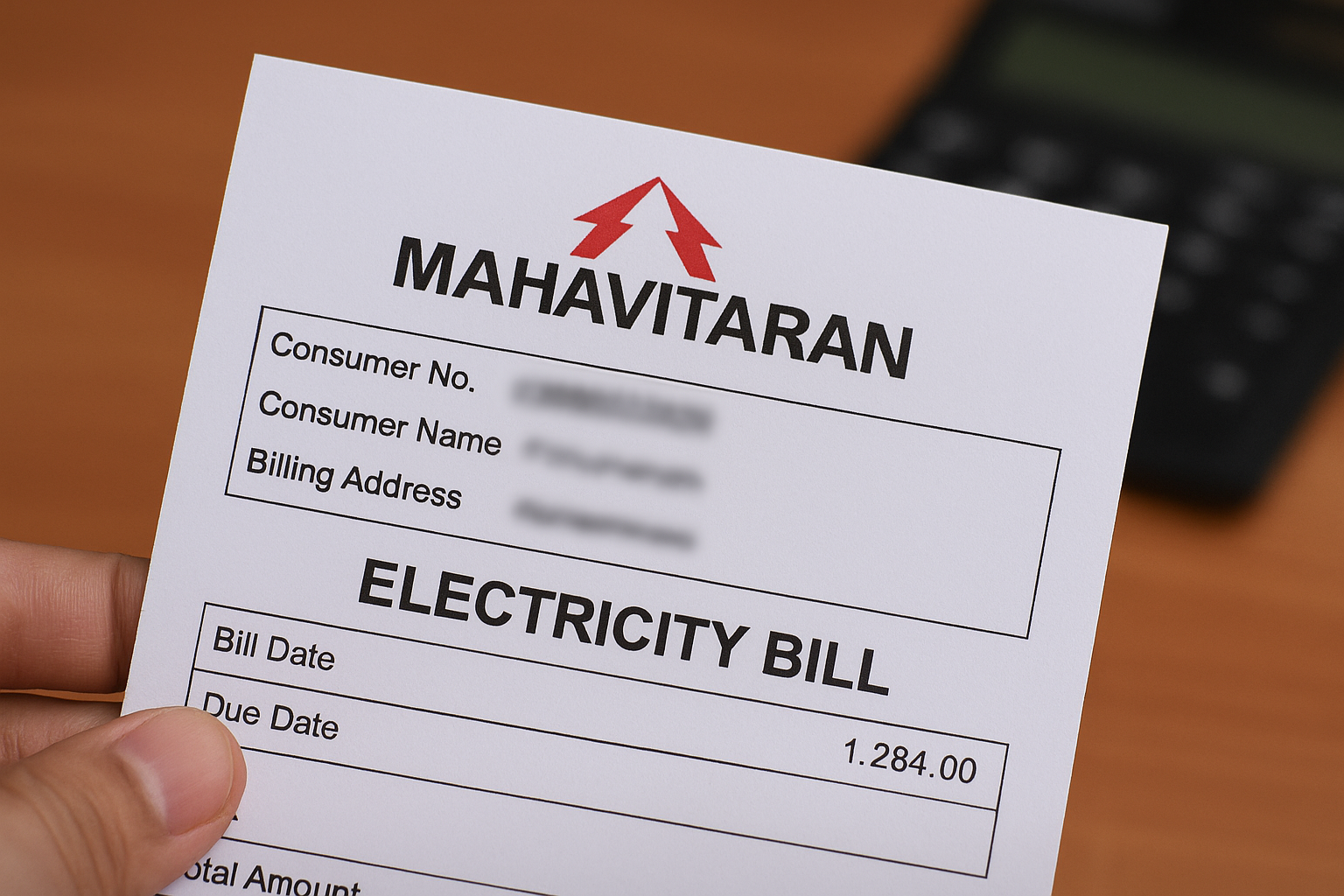Recent Posts
Mahavitaran Alert: High Recovery for Late Bill Payers

Introduction
Electricity is one of the most essential utilities in modern life, and in Maharashtra, it is primarily provided by Mahavitaran, also known as MSEDCL (Maharashtra State Electricity Distribution Company Limited). With millions of customers spread across urban, semi-urban, and rural areas, Mahavitaran plays a critical role in keeping homes, businesses, and public services running. Recently, the state-owned power utility has sounded a stern warning: a “shock” awaits those who delay or default on electricity bill payments.
In a significant move aimed at increasing revenue and ensuring timely payments, Mahavitaran has announced stricter recovery measures for defaulters. Customers who are habitual late-payers or have outstanding dues may now face penalties, disconnections, or legal action. This article explores the implications of this alert, why it was issued, and how consumers can avoid penalties by using the digital options available for paying their bills on time.
Why Has Mahavitaran Issued This Alert?
1. Rising Unpaid Dues
Mahavitaran is grappling with a sharp increase in unpaid electricity dues, which has crossed ₹75,000 crore in recent years. A large chunk of these dues are from agricultural consumers and government departments, but residential and commercial users also contribute significantly.
2. Cash Flow Crisis
Delayed payments have led to a cash flow crunch for Mahavitaran, which must pay upstream suppliers like MahaGenco (generation) and MahaTransco (transmission). This financial bottleneck affects the utility’s ability to maintain infrastructure, upgrade systems, and invest in clean energy initiatives.
3. Government Pressure
The Maharashtra government has been pressing Mahavitaran to improve its financial health and reduce losses. Recovering pending dues has now become a top operational priority.
What Does This ‘High Recovery’ Drive Mean for Consumers?
1. Disconnection of Power Supply
Mahavitaran has already started disconnecting electricity connections of defaulters who haven’t paid their bills despite repeated notices.
2. Additional Penalties and Charges
Late payers may face:
- Delayed payment surcharges (DPS)
- Interest on unpaid amounts
- Reconnection fees (in case of disconnection)
- Legal action in severe cases
3. Spot Inspections and Surprise Checks
In areas where bill recovery is particularly poor, Mahavitaran is deploying special squads for spot inspections and on-the-spot disconnections.
Categories Most Affected by the Crackdown
1. Agricultural Consumers
While agriculture consumes around 25-30% of Maharashtra’s power, payment recovery is less than 20%. While farmers get subsidies, they are now being encouraged to pay bills regularly.
2. Commercial Establishments
Shops, hotels, and industrial units that delay payments are on Mahavitaran’s radar as they contribute significantly to revenue but often default.
3. Government Offices
Mahavitaran has even issued notices to defaulting municipal bodies, government schools, and departments, warning of power cuts unless dues are cleared.
Consumer Reactions and Public Outcry
The announcement of the recovery drive has triggered mixed reactions:
🔹 Supporters Say:
- It’s necessary to keep the power sector financially viable.
- Honest, timely bill-payers should not be penalized for others’ defaults.
🔹 Critics Say:
- The state should improve billing efficiency first.
- Farmers and the poor need protection during inflationary times.
- Government offices should lead by example and clear their own dues.
In response, Mahavitaran has clarified that genuine cases will be considered, and grievance redressal forums will be available for consumers who feel wrongly penalized.
How to Pay Your Mahavitaran Electricity Bill Online
To make things easier and avoid falling into the late-payment trap, Mahavitaran has provided multiple digital options for bill payment.
Mahavitaran Mobile App
- Available on Android & iOS.
- Features:
- View and download bills.
- Make secure payments via UPI, debit/credit card, net banking.
- Set auto-payment reminders.
Official Website
- Visit: https://www.mahadiscom.in
- Go to “Bill Payment” section.
- Enter your Consumer Number.
- Choose from various payment methods (UPI, credit card, net banking, wallets).
Through UPI Apps
You can also pay via:
- PhonePe
- Google Pay
- Paytm
- BHIM
Just link your electricity account and pay bills instantly.
Authorized Payment Centers
For those without smartphones or internet access, offline centers and collection agents are still operational in rural and semi-urban areas.
Tips to Avoid Penalties and Stay Connected
Set Payment Reminders
Use mobile apps or calendar alerts to remind you before the due date.
Go Paperless
Sign up for e-bill alerts via SMS and email to avoid missed bills.
Use Auto-Debit or Standing Instructions
Many banks allow setting up automatic payments for recurring bills.
Keep Payment Records
Always keep payment receipts or transaction IDs in case of disputes.
Register Grievances Early
If you suspect billing errors or inflated charges, report them at:
- Customer Care: 1912 or 1800-102-3435
- Email: customercare@mahadiscom.in
Is the Crackdown Justified?
While Mahavitaran’s decision to enforce stricter recovery mechanisms may seem harsh, from a financial standpoint, it is a necessary step. A power utility cannot operate sustainably if it’s perpetually owed thousands of crores.
However, critics argue that systemic inefficiencies and corruption within the billing and meter-reading processes must also be addressed to build consumer trust.
The Way Forward: A Balanced Approach Needed
Mahavitaran must ensure that:
- Vulnerable groups are protected, including BPL (Below Poverty Line) families and marginal farmers.
- Billing transparency is improved—with accurate meter readings and digital receipts.
- Incentives are offered for early or digital bill payments, such as cashback or discounts.
- Defaulters are rehabilitated with installment-based payment plans or waivers in justified cases.
Recent Posts
Categories
- Actor4
- Actress7
- Bank4
- Biography2
- Bollywood4
- Business10
- Company9
- cricket4
- Economy23
- Education6
- Entertainment47
- External Affairs Defence Security1
- Finance1
- Football1
- Health1
- Hollywood2
- Home1
- India70
- india9
- Industry6
- Latest News53
- lifestyle1
- maharashtra1
- market4
- Politicians13
- Politics29
- Press Release282
- Social8
- Sports28
- Stock Marekt18
- Technology24
- Tollywood2
- World40
- world17











Leave a comment